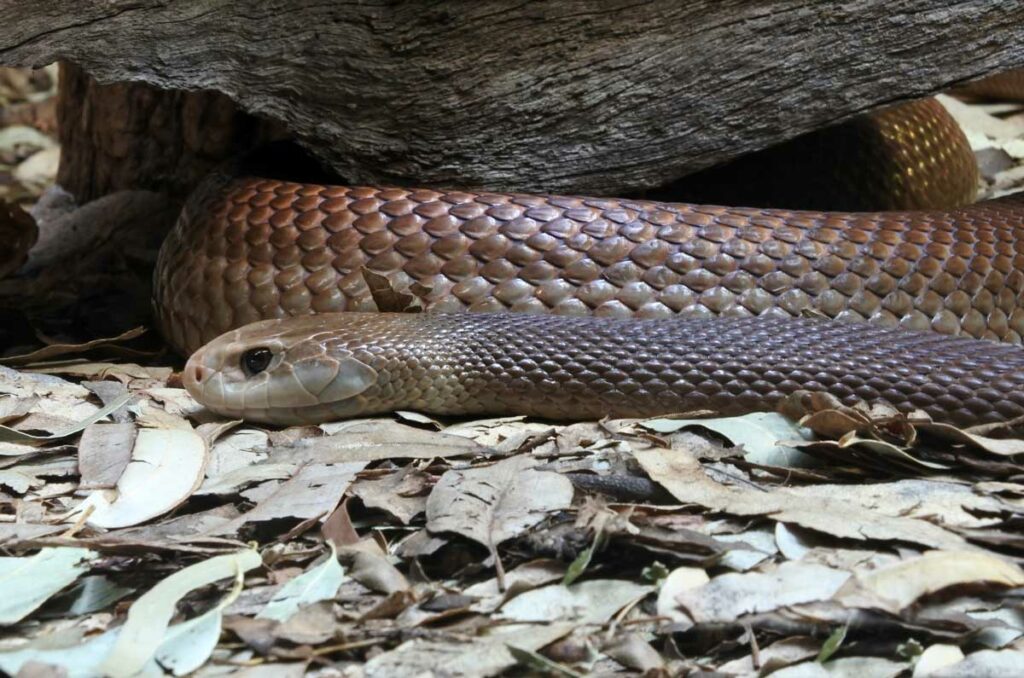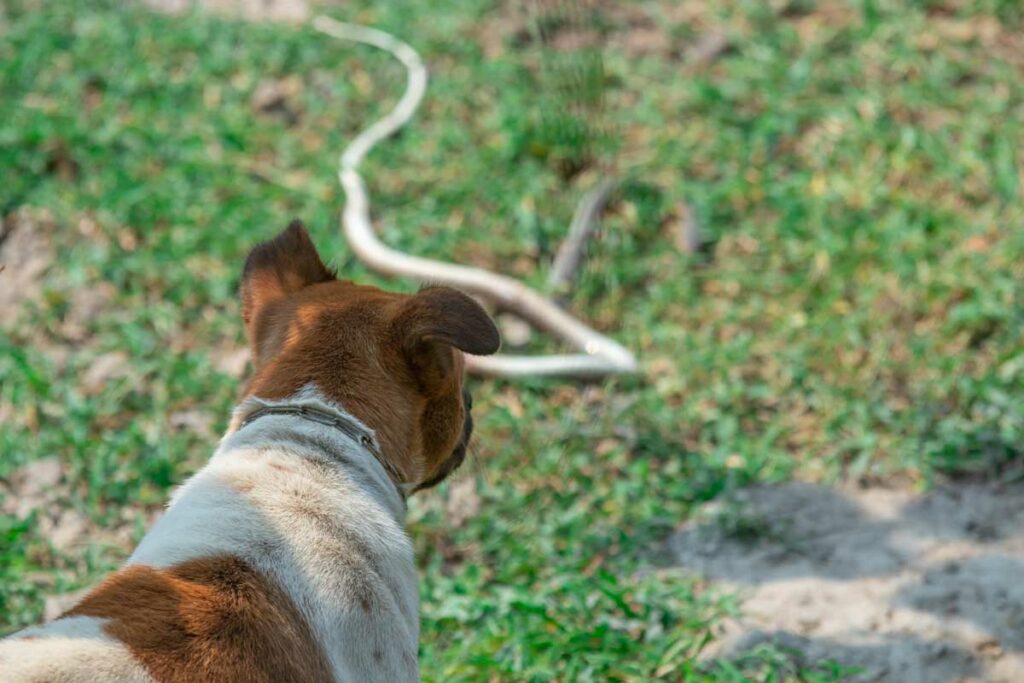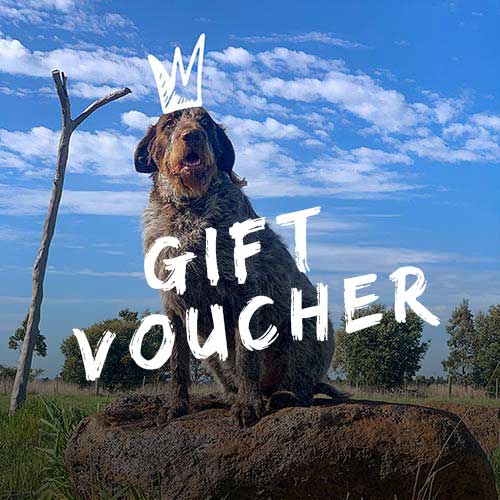Our beloved dogs often join us on travels in Australia’s gorgeous locales, where nature flourishes in all its glory. These experiences, however, can occasionally lead to unexpected encounters with one of the country’s most dreaded creatures: poisonous snakes. We’ll look into the issue of snake bites on dogs, highlighting their potential threat and the significance of being prepared and aware as responsible pet owners. With this information, you can safeguard your cherished doggy companion from the dangers of snake encounters.
Understanding Snake Bite Danger
Australia is renowned for its unique and diverse wildlife, but it also harbours some of the world’s most venomous snakes, making snake bites on dogs a significant concern. Here, we’ll explore the prevalence of snake bites in this country, shed light on the venomous snake species you should be aware of, and underscore the critical importance of swift snake bite treatment.
Snake bites are distressingly common in Australia, with two to three deaths yearly, particularly during the warmer months when humans and dogs spend more time outdoors. While exact statistics can vary, it’s estimated that thousands of snake bites occur annually, with dogs accounting for over 6,000 of these cases. With this in mind, being vigilant and proactive in safeguarding your canine companions is crucial.
Venomous Snake Species in Australia

Australia is home to various venomous snake species, including the notorious Eastern Brown Snake, Inland Taipan, Tiger Snake, and Red-Bellied Black Snake. Each of these species possesses potent venom that can have devastating effects on dogs.
What a Snake Bite on a Dog Looks Like
Snake bites on dogs are often present in various ways, but there are some typical characteristics to be aware of. A snake bite wound typically appears as two small, puncture-like marks on the skin, resembling the fang punctures left by the snake’s venomous fangs. These marks may be accompanied by localised swelling and redness.
However, it’s essential to note that not all snake bites will leave visible marks. Some bites may be ‘dry bites’, where the snake doesn’t inject venom, making it challenging to identify based solely on the wound’s appearance. Therefore, while visible puncture marks can be a strong indicator, it’s equally crucial to recognise other common symptoms and signs of snake bites in dogs, which we’ll explore in the next section.
Symptoms of Snake Bites in Dogs
Snake bites in dogs can lead to various symptoms at the bite site and throughout the dog’s body. Understanding these symptoms is crucial for timely intervention and effective treatment.
Local Symptoms:
- Pain – Dogs bitten by a snake often experience immediate pain at the bite site. They may whimper, yelp, or show signs of distress, such as licking or biting the affected area.
- Swelling – Localised swelling is a common symptom, and the area around the bite may become noticeably puffy. Swelling can spread rapidly, making it a vital indicator of a snake bite.
Systemic Symptoms:
- Difficulty Breathing – In severe cases, snake envenomation can lead to respiratory distress, with rapid or difficult breathing.
- Drooling – Increased drooling can occur as a result of pain and distress.
- Lethargy – Dogs may become unusually tired or lethargic, lacking interest in their surroundings or usual activities.
- Vomiting – Dogs may vomit after a snake bite, often due to the stress and the venom’s impact on their system.
- Weakness – Snake venom can cause weakness or even paralysis in dogs. Your dog may struggle to stand or move, particularly in the hind legs.
Regarding snake bites, it can’t be emphasised how important early detection is. The sooner you identify these signs and seek quick veterinarian attention, the higher your chances of a successful result. Even if you suspect a snake bite but are unsure, seeing a veterinarian as soon as possible is usually recommended.

How to Tell If Your Dog Was Bitten
Dogs are naturally curious and often explore their surroundings, sometimes leading to unexpected encounters with snakes. To figure out if your dog has been bitten, consider the following:
- Limping or Lameness – If a snake bites one of the limbs, you may notice your dog limping or unable to use that leg effectively.
- Pawing at Face or Limbs – Dogs may instinctively try to remove venom or alleviate discomfort by pawing at the affected area.
- Sudden Yelp – A sharp, unexplained yelp or cry of pain indicates that something may be amiss.
- Visible Fang Marks – Check for two small, puncture-like wounds on the skin, which may indicate a snake bite.
Immediate Actions After a Snake Bite
Staying composed is paramount in the critical moments following a suspected snake bite on your dog. Here’s what you should do:
- Stay calm. Your dog looks to you for guidance. Keep a composed demeanour to help keep your pet calm.
- Keep the dog still and quiet. Limit your dog’s movement to prevent the venom from spreading quickly through the bloodstream. Carry or gently leash your dog if necessary.
- Immobilise the bitten area. If possible, immobilise the bitten limb using a splint or bandage. This can slow the venom’s progression.
- Keep the dog hydrated. Offer water to your dog if they are willing to drink. Hydration can support their overall health during this critical time.
- Seek veterinary care immediately. Don’t delay; contact your veterinarian or the nearest emergency animal clinic right away. Inform them of the situation and your estimated arrival time.
Snake Bite Treatment for Dogs
Treating a snake bite in a dog involves a multi-faceted approach tailored to the specific circumstances. Here are the primary treatment options:
- Antivenom Therapy – Administering antivenom is often the cornerstone of snake bite treatment. This serum counteracts the venom’s effects, but its effectiveness depends on factors like the snake species and the severity of the bite.
- Pain Management – Dogs in pain receive medications to alleviate discomfort and distress.
- Supportive Care – This includes intravenous fluids to maintain hydration, oxygen therapy to aid breathing, and monitoring vital signs. Supportive care plays a crucial role in stabilising the dog’s condition.
It’s essential to understand that treatment effectiveness can vary. The type of snake involved, the amount of venom injected, and the dog’s size and overall health impact the outcome. Consulting with a veterinarian ensures the most appropriate treatment plan for your dog’s situation.
Preventing Snake Bites in Dogs
Preventing snake bites in dogs is the best course of action. Consider these proactive measures:
- Avoid snake-prone areas. Be aware of snake habitats, and steer clear of tall grass, rocks, and wooded areas during walks.
- Leash control. To limit their exploration and potential encounters, keep your dog on a leash, especially in snake-prone regions.
- Training – Teach your dog to recognise and avoid snakes. Professional snake aversion training can be valuable.
Education and Preparedness: A Dog Owner’s Responsibility
Vigilance is the key to safeguarding our dogs from the dangers of snake bites. We can provide our four-legged friends with the best protection by staying informed, taking preventive measures, and acting swiftly in case of an encounter.



Leave a Reply